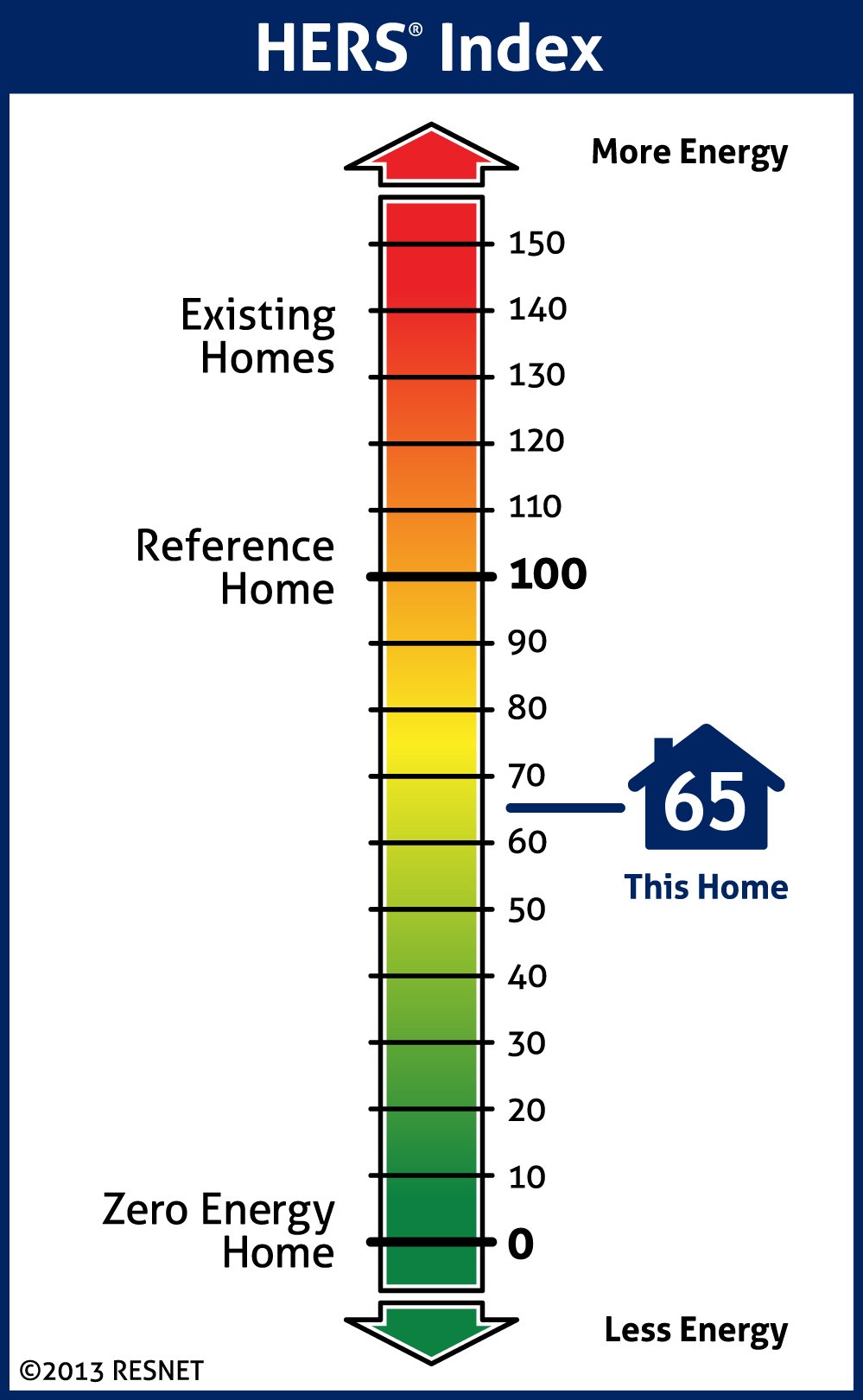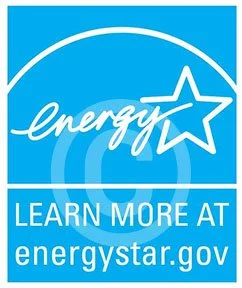HERS RATINGS OR ENERGY STAR?
HERS RATINGS OR ENERGY STAR?
What’s The Difference And Which Is Better?
HERS or Energy Star
With energy efficiency becoming more and more popular, a question we often get by builders trying to stay competitive in the market is which is better, HERS Ratings or Energy Star? What is the difference?
Both HERS Ratings and Energy Star are great programs and provide substantial benefits, it really depends on what is most important to you (the builder) and more importantly what the homebuyer wants. Who is your competition and what are they doing? What area are you building in? Who is your target market? So many questions that come into play when decided what energy program is best for you. When it comes to HERS Ratings vs Energy Star, there are many pros and cons to both. Let’s take a deeper dive into HERS Ratings.
What is a HERS Rating?
HERS stands for Home Energy Rating System.
A HERS Score is an Index used to tell how energy efficient your home is compared to a code built home. The HERS Rating process is governed by a company called RESNET who oversees standards, training, quality assurance, and a formal complaint resolution process. You can learn more about RESENT at resnet.us. The HERS rating is a building block to many other rating programs, including Energy Star.
The score is basically a measurement that tells you how energy efficient your home is compared to a code built home. The lower the score, the more energy efficient your home is! It’s based off a linear scale with 100 meaning the rated home has the same energy use as the HERS Reference Home which is based on the 2004/2006 IECC. A HERS index of 0 means the home has net zero energy usage. Thus, the home produces as much energy as it uses. For example, if the HERS index on a home is 65, the home would be 35% more efficient than the Code built home. See the picture to the left to get a visual perception of how the scale is measured.
What is a HERS Rating?
To get a HERS Rating, a Certified HERS Rater, (preferably Performance Point) will inspect your home and gather information to generate a score. HERS Ratings consider energy usage from all areas of the house including lighting, appliances, framing, insulation, air sealing, water heating, and HVAC. One cool thing about a HERS Rating is you can even accurately estimate annual usage for a house.
What are the benefits of a HERS Rating?
One great aspect of the HERS Index that is important to keep in mind is, it is not pass or fail so it doesn’t hold up construction. That is huge when it comes to production builders who are on a start schedule to keep up with their goals. You also don’t have to pay to become certified or worry about finding a HVAC Contractor who is ACCA certified. A HERS Ratings is a great marketing tool and way to show homebuyers the awesome energy efficient features you have and how it benefits them. There are also Rebate programs out there for builders based of HERS Ratings. Santee Cooper for example offers rebates for homes that score 85 or lower and meet specific criteria. Learn more at santeecooper.com/residential/reduce-the-use-and-save/rebates.aspx.
What is Energy Star?
Energy Star is a widely known energy efficiency program for residential new construction. It is a trusted, government-backed symbol and program. It has many benefits for the homeowner. The Energy Star new homes program has been around since the 1990’s and is currently under version 3.
How do I get my home Energy Star Certified?
To become Energy Star certified, it’s important to partner with an Energy Rater before you start the construction process. Go to theperformancepoint.com.com to find yours today. The Builder must get Certified through the Energy Star website at energystar.gov. They have to watch a video and take a short quiz. The HVAC contractor also has to be ACCA Certified. To learn more, go to acca.org/home.
What are the Benefits of Energy Star?
One of the major benefits for the homeowner is reduced energy costs. On average, you save 35% more than the average code built home. That can be substantial cost savings! The average annual savings for an Energy Star certified home is $300!
Another value add is a greater ROI. Energy Star increases the building value and gives you a greater resale value. It also requires comprehensive air sealing and quality-installed insulation which helps to reduce leaks and drafts. With less gaps and cracks, you end up having more consistent temperatures, minimizing warm and cold spots and improving comfort in the home. ES provides a comprehensive water management system, including flashing, moisture barriers, and heavy -duty membranes to protect the home from moisture damage. They also require fresh air ventilation. A fresh air system provides a controlled amount of outdoor air combined with a high-performance filter to improve indoor air quality and in return reduces dust, pollen, and other allergens. It also prevents mold build up from a home becoming too tight.
Crazy to think they want you to air seal and make the home so tight just to bring air back in the home, right?! That’s what you call building science people. There is a science to this madness. And lastly but not least, you are helping save the environment. Each Energy Star certified home reduces greenhouse gases by 3,700 lbs per year compared to a code built home. That is equivalent to 43 trees. So, with all the benefits mentioned above for Energy Star, why wouldn’t you choose it over a HERS rating?
Difficulties with Energy Star
Even though Energy Star has a million benefits to the homeowner, it can be a very difficult process. Energy Star can be somewhat costly for the builder and HVAC contractor. It is important for the trades involved to know what is required from the start of construction. Many builders wait until they are about to insulate to ask for their home to be certified and often, it is too late depending on what type of framing they had or if pre-drywall has been hung yet.
Energy Star is pass or fail so if something isn’t done correctly during the process, you can fail your inspection which in turn holds up the next trade until the correction is completed. Think about that for a minute. You are building 500 homes in a year, with 20 different trade partners. One inspection failed because the insulation wasn’t correct and they had gaps and cracks that needed to be air sealed. They fail inspection and can’t fix the items for 2 days. The items finally get corrected and it passes inspection but now the dry wall contractors are busy and can’t get in for 3 more days which pushes back the next trade. Now because of one failed inspection, you are weeks behind. It’s a domino effect so it’s important for things to be done correctly the first time. For a home to pass Energy Star, there is a checklist based off performance. If you are building a custom home, the homeowner may prefer a huge fridge and outside shower over energy efficient appliances or LED lighting. Which goes back to why it is important to know your target market and understand what is required before deciding which program is better for you.
Another huge hurtle we come across as a Third Party Inspector for Energy Star is collecting the checklists from the builders and HVAC contractors. I can’t stress the importance and headache of this enough. We are constantly chasing people down to get their checklists complete or correct. We CANNOT complete the Energy Star Certificate without the checklists from the Rater, Builder, and HVAC Contractor. So many times the HVAC company doesn’t fill out what is required and homeowner and builders are knocking our doors down for their Certs which makes us look bad. So one thing I will say is if you choose to certify your homes as Energy Star, make sure you work with builders and trades you can trust to complete the process so you aren’t making promises to homeowners you can’t keep.
Conclusion
Okay, so you could build a home just as tight as an Energy Star home and not get it certified but get a HERS Score? YES! But then do you have to worry about your home being too “tight”? I’m so glad you asked… No it is not required to have fresh air ventilation with a HERS Score so you very well could end up making your home too tight. Therefore, it is so important to consult a building scientist and get the advice you need to build an energy-efficient home. There are many benefits to getting a HERS Rating and many benefits to certifying your home to be Energy Star Certified.
To learn more about Performance Point, go to our Facebook page at facebook.com/energyratersproven.
Click here to see a sample Energy Star Certificate.



